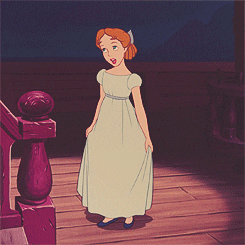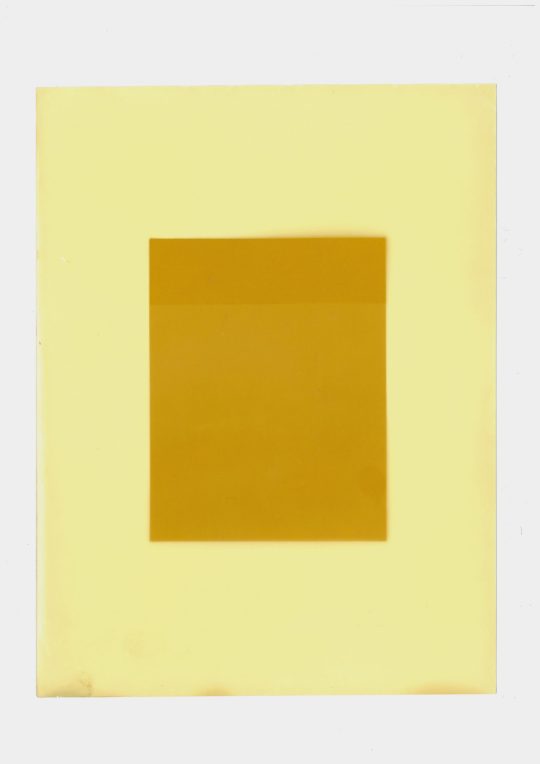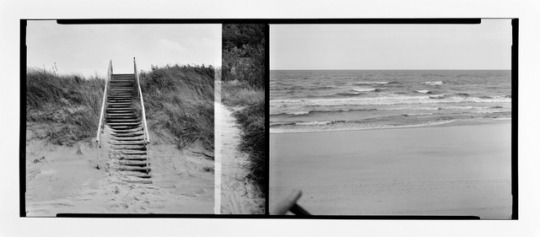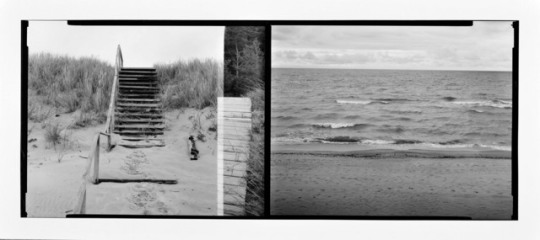#trimakas
Photo

(via GIPHY)
5 notes
·
View notes
Photo

GINTAUTAS TRIMAKAS Untitled, 2018 Lumen print on silver gelatin paper
6 notes
·
View notes
Photo

Gintautas Trimakas
More: http://www.photography.lt/lt.php/Fotografai?id=131
48 notes
·
View notes
Text
Žiaurūs žodiniai žaidimai
Linčo teismas - tai asmens bausmė be argumentuoto pagrindo. Manoma, kad ši sąvoka susiformavo kažkur JAV revoliucijos laikotarpiu. Kas būtent yra šios frazės autorius, teliko spėlionėmis, kadangi jau tuo metu gyveno bent trys potencialūs kandidatai pavarde Lynch.
Žmogaus ketinimas susidoroti su kitu turi daug veidų. Kiekvienas veidas sulaukia vis skirtingos reakcijos ir dėmesio. Istoriškai, nesunku iš karto prisiminti bent kelis pavyzdžius kaip krikščionių persekiojimas po Kristaus mirties, raganų medžioklė viduramžiais, holokaustas, trėmimai. Nors, aišku, tokios žiaurumo apraiškos peraugo Linčo teismo sąvoką, kadangi sugebėdavo tapti masiniu reiškiniu, kad ir koks jis dabar atrodo žiaurus ir absurdiškas šiuolaikiniam žmogui. Bent jau tam, kuris gerbia gyvybę.
Ir aš jums sakau, viskas yra per tuos prakeiktus žodžius. Tik aš jau nesuprantu, ar tai yra nesusikalbėjimas, ar tik vienos pusės išklausymas, ar tiesiog aklas pasitikėjimas tuo, kas garsiau rėkia.
Šiuolaikinėje virtualioje visuomenėje linčiavimas yra pasiekęs visai naują lygmenį, kurio amžininkai dažnai yra linkę neatpažinti. Žmogus pamiršta, kad irgi yra istorinės linijos dalis ir būdamas tik vienetu jis prisideda prie visos masės, viso žmonijos kūno progreso ar regreso. Apie tai, link kur mes einam, gal kitą kartą. Labai priklauso nuo srities ir kelio.
Grįžtant prie temos. Vis dar niekaip negaliu susitvarkyti su priklausomybe nuo socialinių tinklų, nors beveik niekuo nesidalinu ir su žmonėm bendrauju tik atsiradus reikalui. Net FB algoritmas jau susitvarkė taip, kad mano įrašus mato žymiai mažiau žmonių. Visgi, dar mėgstu pascrollint šūdus ir ypač paskaityti komentarus po straipsniais, video ir panašiai. Štai ten yra tas linčiuotojų lakmuso popierėlis. Labai svarbių nuomonių aukso gysla.
Vieną laiko švaistymo pertrauką mano dėmesį patraukė vieno bičo iš JAV anoniminė istorija. Trumpai, tai kažkokiam vakarėly vaikinas permiegojo su mergina (galima buvo suprasti, kad ji tai daro savo noru, kai pati uždėjo gandoną). Po to jis išsiaiškino, kad mergina turi bičą, jie nusprendė pasakyti apie šitą nuotykį tam bičui. Kitą dieną mergina visiems pranešė, kad ją išprievartavo ir nuo to laiko bičui užsivėrė visi keliai jei ne į super sėkmingą, tai bent jau ramų gyvenimą. Komentarai kaip visą laiką įvairūs, bet labai dažnas buvo klausimas – o kokia yra merginos istorijos dalis? Bet, kaip dažnai klaustų kito istorijos dalies, jeigu pagrindinė veikėja būtų mergina?
Tuomet prisiminiau praeitų metų pavasarį VDA, kai po pirmo straipsnio apie Gasiūną dauguma buvom įsitikinę, kad šūdas čia pasikeis ir Tapybos katedroj toliau kampuose verks studentės. Ir oblia, kaip įsibegėjo karavanas nuo anoniminių istorijų! Jos pavirto uždarais posėdžiais, kurie galop išmetė tris dėstytojus, nors didžiajai bendruomenės daliai taip ir neliko aišku, prie ko čia buvo Trimakas... Tačiau, kad galimai iš darbo akademijoje pasitraukė nekaltas žmogus, manęs nenustebino tiek, kiek kitų universitetų reakcija. Kokių universitetų, manęs net taksistas klausė, ar ten, akadėj, tik iškrypėliai. Kol dvi meninės akademinės įstaigos spaudė pūlius, visuomenės komentarai teliko banaliai liūdni – kad vėl tie menininkai su savo iškrypimais, taip jiems ir reikia. Bet žinot, kaip sakoma, menas yra visuomenės atspindys. Ir tų pūlių ir vočių pilna ir tarp tų padoriųjų, tik kažkodėl, vietoj sekimo pavyzdžiu, pasijuokia iš kito ir toliau kenčia savo kirvių ir senių klube.
Anoniminiai, vieši, tiesioginiai ir virtualūs žodžiai tapo silpnųjų priemone nubausti kaltininkus. Nežinau, kur tai veda, bet jau dabar matau, kiek daug spragų yra, kaip paprasta dabar pasinaudoti kitų reakcingumu ir ištremti iš visuomenės kaip į kokį Sibirą žmones, kurie neturėjo blogų intencijų. Kaip paprasta mėtytis purvais ir fasuoti žmones pagal hashtagus, nors tą dialogo akimirką ne taip suddėliojai sakinį. Kaip paprasta yra išbraukti žmogaus talentą, įdirbį ir potencialą dėl to, koks nepriimtinas jo charakteris. Daugeliui menininkų pasisekė, tiesiog nuoširdžiai pasisekė, kad jie jau mirę. Turbūt Van Gogh paveikslai taip ir būtų likę tvarto tvora, Picasso daužytų opiumą ir nesulauktų senatvės, da Vinci pūtų kalėjime kartu su jo išdarinėjamais gyvūnais. Bet juk dabar jau nebe jų laikas, dabar mes kuriame naujas taisykles? Juk negalima tiesiog ramiai palikti tų įrodymų, kaip nusikalto asmuo? Argi tada nepakanka teisinių institucijų įsikišimo, kaip ir su paprastu žmogumi, ar turi sėsti į kalėjimą kartu su savo darbais? Neturiu atsakymų į šiuos klausimus, bet jau tikrai žinau, kad kuo toliau, tuo įdomiau.
Pabaigai, tam skaitytojui, kur sako, kad šitas blogas yra lochas, rašo šūdus ir teršia Lietuvos vardą, nes čia nieko panašaus nevyksta kaip vakaruose, tai tenoriu pasakyti, kad nebūtinai kiekvienoje šalyje tai vyksta vienoda forma. Lietuviai kuklesni, bailesni ir taip necatcallina mergų gatvėj kaip New Yorke, o prabilti apie traumuojančias patirtis neturi ryžto, nes tai yra tiesus kelias į nepelnytus kaltinimus atgal ir dar didesnį pažeminimą ir siaubą keliantį lietuvišką teismą, kurio byloje vis tiek nieko neišloši. Tai ir metoo čia buvo palyginus bezdalas. Nors statistika rodo, kad vis tiek yra dėl ko sunerimti, ypač smurto klausimu.
7 notes
·
View notes
Photo

New Post has been published on https://toldnews.com/travel/art-review-at-frieze-new-york-islands-of-daring/
Art Review: At Frieze New York, Islands of Daring

Getting into this year’s Frieze Art Fair on Randalls Island will cost you $57, plus the round trip on the ferry. But that’s nothing compared to what it cost nearly 200 galleries to exhibit there. And so dealers have made the reasonable decision to bring a little of everything that sells — which may account for the conservative vibe. That said, there are many islands of daring, including special sections focused on solo presentations, small galleries, the influential gallery JAM and virtual reality. We sampled them all — along with the mainland fairs that are part of Frieze Week. Our art critics Martha Schwendener and Will Heinrich pick a handful of the best booths under Frieze New York’s big tent.
Booth C2
Bridget Donahue and LC Queisser
One of the strongest single-artist booths is a joint presentation by Bridget Donahue Gallery and LC Queisser, who represent the artist Lisa Alvarado in New York and the Republic of Georgia, respectively. Ms. Alvarado made her acrylic-on-canvas pieces, each painted with a thrilling zigzag pattern, as backdrops for performances by the Natural Information Society, in which she plays the harmonium. If the fair’s not too loud, you’ll be able to hear the band’s hypnotic music, too. WILL HEINRICH
Two exceptional but very different displays are on view in the fair’s midsection. At Casey Kaplan gallery, Matthew Ronay’s carved wooden sculptures, pieced together into abstract, evocative organic configurations in various coral hues, are placed on plinths and feel like an oasis amid the fair’s chaos. (Mr. Ronay also has an exhibition on view at Kaplan’s Chelsea location.) Martine Gutierrez continues her rampage as the Indigenous Woman, a transgender alternative-fashionista at Ryan Lee. In photographs and faux-fashion spreads, Ms. Gutierrez combines traditional Mayan and Guatemalan garments and fabrics with fantastic and futuristic accessories and makeup to conjure new, fluid forms of being. MARTHA SCHWENDENER
Booths F6, F12 and F14
Company, Bank and Very Small Fires
The Frame section of Frieze, devoted to galleries 10 years or younger, is particularly good this year. Befitting the ethos of the emerging artists they represent, the booths are platforms for performance or installations, with linoleum or AstroTurf covering the floors. The New York gallery Company is hung with paintings by Jonathan Lyndon Chase that feature roughly drawn figures or graffiti, as well as crude sculptures of a toilet seat or a dollar sign. Yanyan Huang treats the booth at Bank, a Shanghai gallery, as an “immersive portal” (according to a handout) in which traditional ink drawings merge with digital applications. Nearby, Diedrick Brackens’s colorful tapestries at the Los Angeles gallery Various Small Fires join traditional materials with references to figures like African-American cowboys. SCHWENDENER
The Tehran gallery Dastan (appearing here as Dastan’s Basement) has hung more than 50 portraits by the artist and architect Bijan Saffari. A member of the royal family who left Iran for Paris after his country’s 1979 revolution, Mr. Saffari was also gay, which made his position doubly precarious. The portraits are rather simple and conservative, drawn in graphite and colored pencil. And yet they are sensitive and closely observed, and they gain by their group presentation, appearing like a narrative of his circle of friends in the ’70s and ’80s. There is an elegiac tone to these drawings; the artist died days before the current edition of Frieze opened. SCHWENDENER
Booths B36 and F9
David Lewis and Antoine Ertaskiran
In a fair dominated by painting, David Lewis of the Lower East Side and Montreal’s Galerie Antoine Ertaskiran, making its Frieze debut, stand out with presentations that could pass for gallery shows. Four cool acrylics by New York painter Charles Mayton, at Lewis, feature schematic eyes and hands in jazzy mash-ups of shelves, bars and circles. Jane Corrigan’s large wet-on-wet paintings of women on the go, at Ertaskiran, are exquisite brown and yellow collisions of impatience and poise. HEINRICH
Booths A11, B32, C7 and D1
Foxy Production, Simone Subal, Rachel Uffner and Galerie Lelong
Several New York galleries have mounted outstanding painting displays in which artists bend the medium in a variety of ways. At Foxy Production, Srijon Chowdhury, Gina Beavers and Sascha Braunig offer reinventions of Gothic romanticism, surrealism, Op or Pop Art. Simone Subal is showing the work of Emily Mae Smith, whose paintings are slick and whip-smart updates and appropriations of posters from the ’70s and ’80s. Maryam Hoseini works both on and off the wall at Rachel Uffner, but combines abstracted Persian imagery or techniques with contemporary painting. Sarah Cain’s take on painting at Galerie Lelong offers candy colors, cutouts and a floor flooded and stained with pigment. They remind you of paintings’ origins — in childhood — and suggest a kind of joyful, delirious regression. SCHWENDENER
Booths S4, S10 and S11
Galerist, Galeri Nev and Pi Artworks
The fair’s outstanding Spotlight section, curated by Laura Hoptman of the Drawing Center, is dedicated to “significant work by overlooked figures.” They include Yüksel Arslan, a Turkish painter born in 1933 who moved to Paris at the invitation of André Breton and died in 2017. His “Arture 439, Sans Titre, l’Homme,” from 1992, in a joint presentation by Turkish galleries Galerist and Galeri Nev, is a gloriously strange gallimaufry of interspecies sex acts and quotations from the artist’s scientific reading, drawn with homemade colors. Susan Hefuna makes ink drawings inspired by the intricate wooden screens of her Cairo childhood. The examples presented by Pi Artworks of London and Istanbul are done on overlapping sheets of tracing paper fastened with rice glue. The multitude of tones and textures create a fascinating tension between clarity and ambiguity — the drawings are like letters of a foreign language glimpsed in a dream. HEINRICH
The Diálogos section of Frieze includes solo presentations of Latin American art, organized by Patrick Charpenel and Susanna V. Temkin of New York’s El Museo del Barrio. I was particularly taken with Mariela Scafati’s hybrids of paintings and sculpture at the Buenos Aires gallery Isla Flotante. Ms. Scafati takes wooden bars where canvas is stretched and treats them like bones, joining the parts together in puppetlike configurations, sometimes bound or “wearing” a jacket or a pair of pants. SCHWENDENER
Booths B9, B10 and B20
lokal_30, Koenig & Clinton and Kate Werble
A vibrant knot of color and form awaits you at the intersection of New York’s Koenig & Clinton and Kate Werble galleries and Warsaw’s lokal_30. From Poland come three painters exemplifying postwar and contemporary Surrealism, among them the young Ewa Juszkiewicz, who repaints classic portraits of women, but hides their faces with cloth, ears of corn or a backward French braid. They evoke feminism, dream logic and implicit violence. Tony Marsh’s over-the-top ceramic vessels, encrusted in what look like shards of glaze, meet the eye-bending optical paintings of Anoka Faruqee & David Driscoll at Koenig & Clinton. Marilyn Lerner makes delicately complicated oil-on-wood abstractions at Kate Werble; don’t miss the unlabeled low tables by Christopher Chiappa, also in Werble’s booth. HEINRICH
There’s something magical about William T. Williams’s early 1970s “Diamond in a Box” paintings, hard-edged geometric patterns in blazing colors. The subtle misdirection of those patterns, and the complicated rhythm of the colors, mean you could look at them forever. Michael Rosenfeld presents a dozen never-before-shown acrylic-on-paper works from the same period. In these, a wiggly meander snakes in and out of concentric circles filled with vibrant brush strokes — they’re like Bauhaus takes on the Aztec calendar. HEINRICH
Booth F18
PM8
Spanish gallery PM8 presents 80 black-and-white photographs by the Lithuanian photographer Gintautas Trimakas, shot in the mid-90s and hung in three long rows. The piece shows 80 women with their heads and legs cropped out. Though the backgrounds range from white to nearly black, and the clothing and body types are all over the map, the typological presentation wears away these differences and leaves the figures all looking more or less interchangeable. It’s a deeply cynical take on both the consumerist Western freedoms available to Lithuanians after their 1990 independence and on the fate of all human bodies — the women aren’t so much living people as corpses in waiting. HEINRICH
V.I.P.s have access to the Deutsche Bank Wealth Management Lounge at Frieze New York. But nearly everyone can benefit from PPOW’s display of paintings by Steve Keene, which are on sale for $15 to $50. Mr. Keene was heavily influenced by indie rock bands in the early 1990s — his friends in Pavement, Silver Jews and the Dave Matthews Band — and the idea of selling quick, sketchily rendered paintings like cassette tapes. Using a stage in PPOW’s booth as a pop-up studio, he will produce hundreds of paintings on thin plywood panels — they are part endurance performance, part public art stunt. The vibe feels like one in a record store during an album release party. SCHWENDENER
Frieze New York
Through May 5 at Randalls Island Park; frieze.com. Tickets are limited and only available online.
#n i travel news#travel news a47#travel news leicester#travel news london#travel news m55#travel news uae
0 notes
Text
At Frieze New York, Islands of Daring
Getting into this year’s Frieze Art Fair on Randalls Island will cost you $57, plus the round trip on the ferry. But that’s nothing compared to what it cost nearly 200 galleries to exhibit there. And so dealers have made the reasonable decision to bring a little of everything that sells — which may account for the conservative vibe. That said, there are many islands of daring, including special sections focused on solo presentations, small galleries, the influential gallery JAM and virtual reality. We sampled them all — along with the mainland fairs that are part of Frieze Week. Our art critics Martha Schwendener and Will Heinrich pick a handful of the best booths under Frieze New York’s big tent.
Booth C2
Bridget Donahue and LC Queisser
One of the strongest single-artist booths is a joint presentation by Bridget Donahue Gallery and LC Queisser, who represent the artist Lisa Alvarado in New York and the Republic of Georgia, respectively. Ms. Alvarado made her acrylic-on-canvas pieces, each painted with a thrilling zigzag pattern, as backdrops for performances by the Natural Information Society, in which she plays the harmonium. If the fair’s not too loud, you’ll be able to hear the band’s hypnotic music, too. WILL HEINRICH
Two exceptional but very different displays are on view in the fair’s midsection. At Casey Kaplan gallery, Matthew Ronay’s carved wooden sculptures, pieced together into abstract, evocative organic configurations in various coral hues, are placed on plinths and feel like an oasis amid the fair’s chaos. (Mr. Ronay also has an exhibition on view at Kaplan’s Chelsea location.) Martine Gutierrez continues her rampage as the Indigenous Woman, a transgender alternative-fashionista at Ryan Lee. In photographs and faux-fashion spreads, Ms. Gutierrez combines traditional Mayan and Guatemalan garments and fabrics with fantastic and futuristic accessories and makeup to conjure new, fluid forms of being. MARTHA SCHWENDENER
Booths F6, F12 and F14
Company, Bank and Very Small Fires
The Frame section of Frieze, devoted to galleries 10 years or younger, is particularly good this year. Befitting the ethos of the emerging artists they represent, the booths are platforms for performance or installations, with linoleum or AstroTurf covering the floors. The New York gallery Company is hung with paintings by Jonathan Lyndon Chase that feature roughly drawn figures or graffiti, as well as crude sculptures of a toilet seat or a dollar sign. Yanyan Huang treats the booth at Bank, a Shanghai gallery, as an “immersive portal” (according to a handout) in which traditional ink drawings merge with digital applications. Nearby, Diedrick Brackens’s colorful tapestries at the Los Angeles gallery Various Small Fires join traditional materials with references to figures like African-American cowboys. SCHWENDENER
The Tehran gallery Dastan (appearing here as Dastan’s Basement) has hung more than 50 portraits by the artist and architect Bijan Saffari. A member of the royal family who left Iran for Paris after his country’s 1979 revolution, Mr. Saffari was also gay, which made his position doubly precarious. The portraits are rather simple and conservative, drawn in graphite and colored pencil. And yet they are sensitive and closely observed, and they gain by their group presentation, appearing like a narrative of his circle of friends in the ’70s and ’80s. There is an elegiac tone to these drawings; the artist died days before the current edition of Frieze opened. SCHWENDENER
Booths B36 and F9
David Lewis and Antoine Ertaskiran
In a fair dominated by painting, David Lewis of the Lower East Side and Montreal’s Galerie Antoine Ertaskiran, making its Frieze debut, stand out with presentations that could pass for gallery shows. Four cool acrylics by New York painter Charles Mayton, at Lewis, feature schematic eyes and hands in jazzy mash-ups of shelves, bars and circles. Jane Corrigan’s large wet-on-wet paintings of women on the go, at Ertaskiran, are exquisite brown and yellow collisions of impatience and poise. HEINRICH
Booths A11, B32, C7 and D1
Foxy Production, Simone Subal, Rachel Uffner and Galerie Lelong
Several New York galleries have mounted outstanding painting displays in which artists bend the medium in a variety of ways. At Foxy Production, Srijon Chowdhury, Gina Beavers and Sascha Braunig offer reinventions of Gothic romanticism, surrealism, Op or Pop Art. Simone Subal is showing the work of Emily Mae Smith, whose paintings are slick and whip-smart updates and appropriations of posters from the ’70s and ’80s. Maryam Hoseini works both on and off the wall at Rachel Uffner, but combines abstracted Persian imagery or techniques with contemporary painting. Sarah Cain’s take on painting at Galerie Lelong offers candy colors, cutouts and a floor flooded and stained with pigment. They remind you of paintings’ origins — in childhood — and suggest a kind of joyful, delirious regression. SCHWENDENER
Booths S4, S10 and S11
Galerist, Galeri Nev and Pi Artworks
The fair’s outstanding Spotlight section, curated by Laura Hoptman of the Drawing Center, is dedicated to “significant work by overlooked figures.” They include Yüksel Arslan, a Turkish painter born in 1933 who moved to Paris at the invitation of André Breton and died in 2017. His “Arture 439, Sans Titre, l’Homme,” from 1992, in a joint presentation by Turkish galleries Galerist and Galeri Nev, is a gloriously strange gallimaufry of interspecies sex acts and quotations from the artist’s scientific reading, drawn with homemade colors. Susan Hefuna makes ink drawings inspired by the intricate wooden screens of her Cairo childhood. The examples presented by Pi Artworks of London and Istanbul are done on overlapping sheets of tracing paper fastened with rice glue. The multitude of tones and textures create a fascinating tension between clarity and ambiguity — the drawings are like letters of a foreign language glimpsed in a dream. HEINRICH
The Diálogos section of Frieze includes solo presentations of Latin American art, organized by Patrick Charpenel and Susanna V. Temkin of New York’s El Museo del Barrio. I was particularly taken with Mariela Scafati’s hybrids of paintings and sculpture at the Buenos Aires gallery Isla Flotante. Ms. Scafati takes wooden bars where canvas is stretched and treats them like bones, joining the parts together in puppetlike configurations, sometimes bound or “wearing” a jacket or a pair of pants. SCHWENDENER
Booths B9, B10 and B20
lokal_30, Koenig & Clinton and Kate Werble
A vibrant knot of color and form awaits you at the intersection of New York’s Koenig & Clinton and Kate Werble galleries and Warsaw’s lokal_30. From Poland come three painters exemplifying postwar and contemporary Surrealism, among them the young Ewa Juszkiewicz, who repaints classic portraits of women, but hides their faces with cloth, ears of corn or a backward French braid. They evoke feminism, dream logic and implicit violence. Tony Marsh’s over-the-top ceramic vessels, encrusted in what look like shards of glaze, meet the eye-bending optical paintings of Anoka Faruqee & David Driscoll at Koenig & Clinton. Marilyn Lerner makes delicately complicated oil-on-wood abstractions at Kate Werble; don’t miss the unlabeled low tables by Christopher Chiappa, also in Werble’s booth. HEINRICH
There’s something magical about William T. Williams’s early 1970s “Diamond in a Box” paintings, hard-edged geometric patterns in blazing colors. The subtle misdirection of those patterns, and the complicated rhythm of the colors, mean you could look at them forever. Michael Rosenfeld presents a dozen never-before-shown acrylic-on-paper works from the same period. In these, a wiggly meander snakes in and out of concentric circles filled with vibrant brush strokes — they’re like Bauhaus takes on the Aztec calendar. HEINRICH
Booth F18
PM8
Spanish gallery PM8 presents 80 black-and-white photographs by the Lithuanian photographer Gintautas Trimakas, shot in the mid-90s and hung in three long rows. The piece shows 80 women with their heads and legs cropped out. Though the backgrounds range from white to nearly black, and the clothing and body types are all over the map, the typological presentation wears away these differences and leaves the figures all looking more or less interchangeable. It’s a deeply cynical take on both the consumerist Western freedoms available to Lithuanians after their 1990 independence and on the fate of all human bodies — the women aren’t so much living people as corpses in waiting. HEINRICH
V.I.P.s have access to the Deutsche Bank Wealth Management Lounge at Frieze New York. But nearly everyone can benefit from PPOW’s display of paintings by Steve Keene, which are on sale for $15 to $50. Mr. Keene was heavily influenced by indie rock bands in the early 1990s — his friends in Pavement, Silver Jews and the Dave Matthews Band — and the idea of selling quick, sketchily rendered paintings like cassette tapes. Using a stage in PPOW’s booth as a pop-up studio, he will produce hundreds of paintings on thin plywood panels — they are part endurance performance, part public art stunt. The vibe feels like one in a record store during an album release party. SCHWENDENER
Frieze New York
Through May 5 at Randalls Island Park; frieze.com. Tickets are limited and only available online.
Sahred From Source link Travel
from WordPress http://bit.ly/2GVjuBf
via IFTTT
0 notes
Photo

Gintautas Trimakas
More: http://www.photography.lt/lt.php/Fotografai?id=131
34 notes
·
View notes
